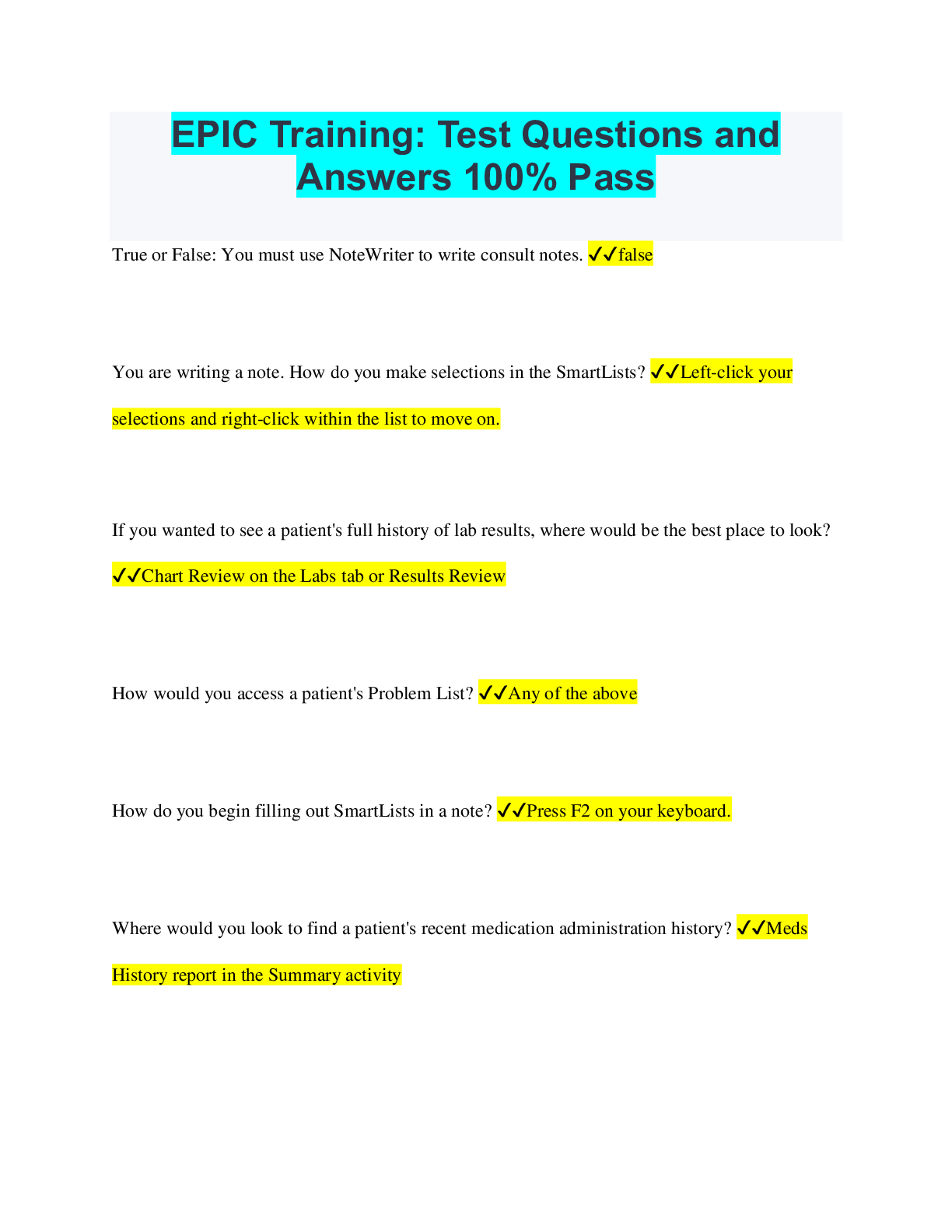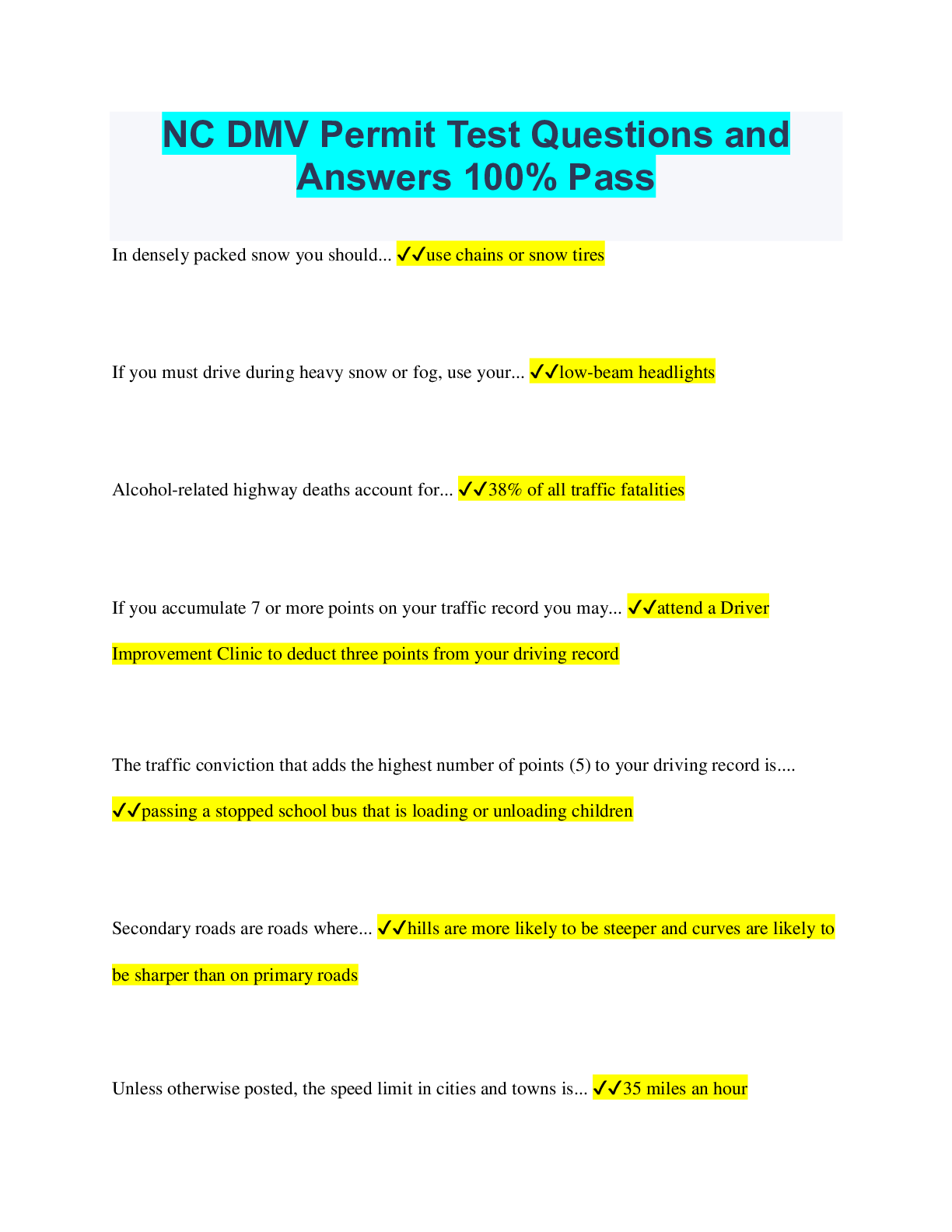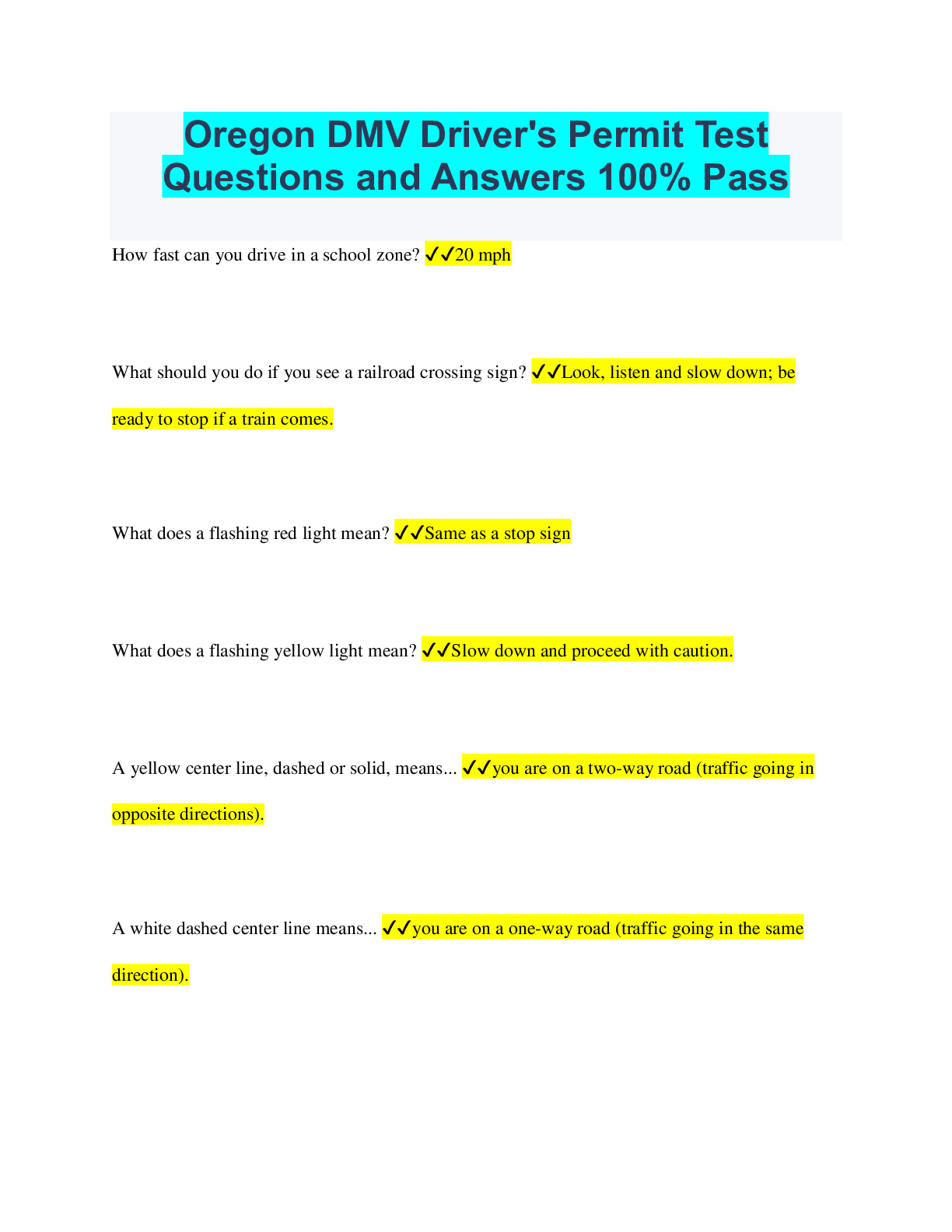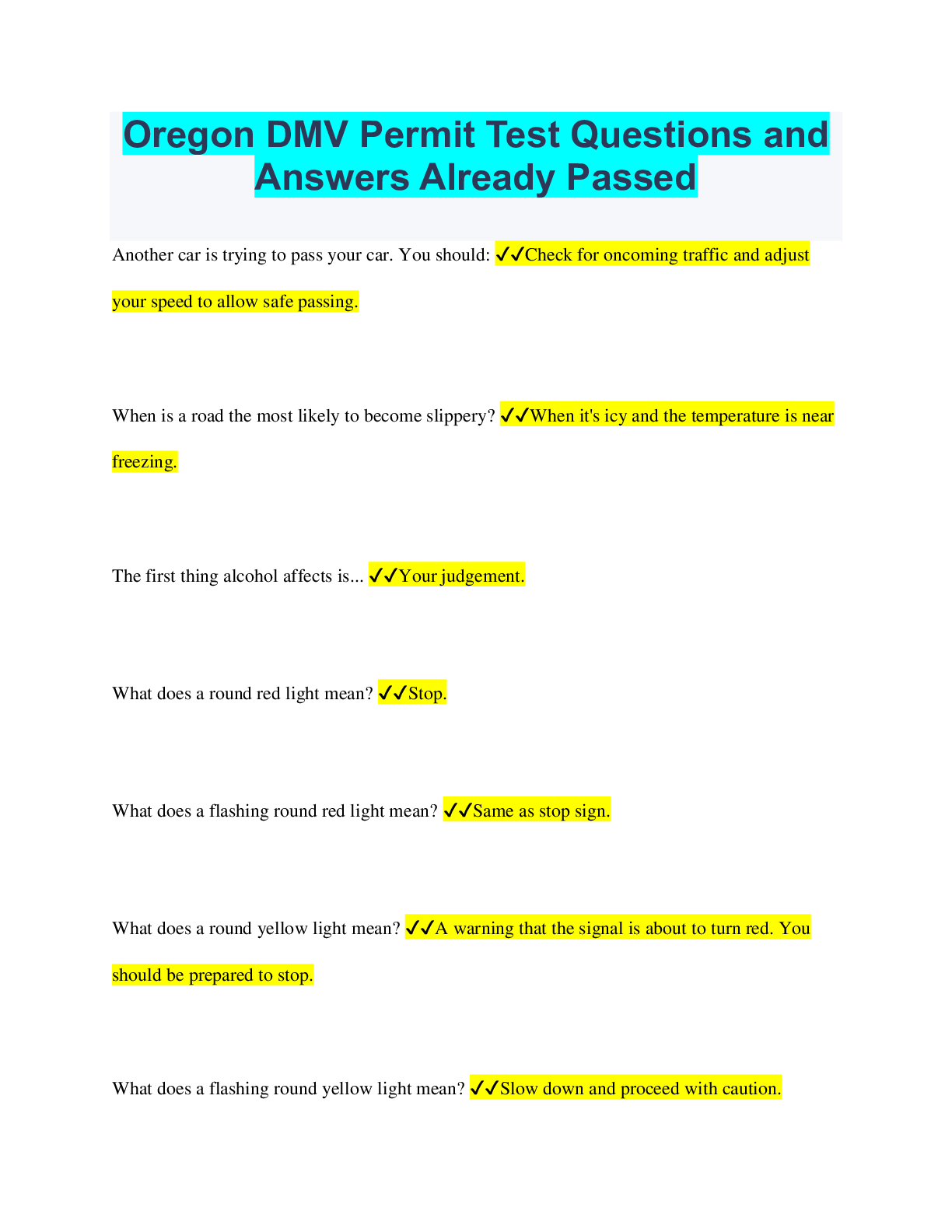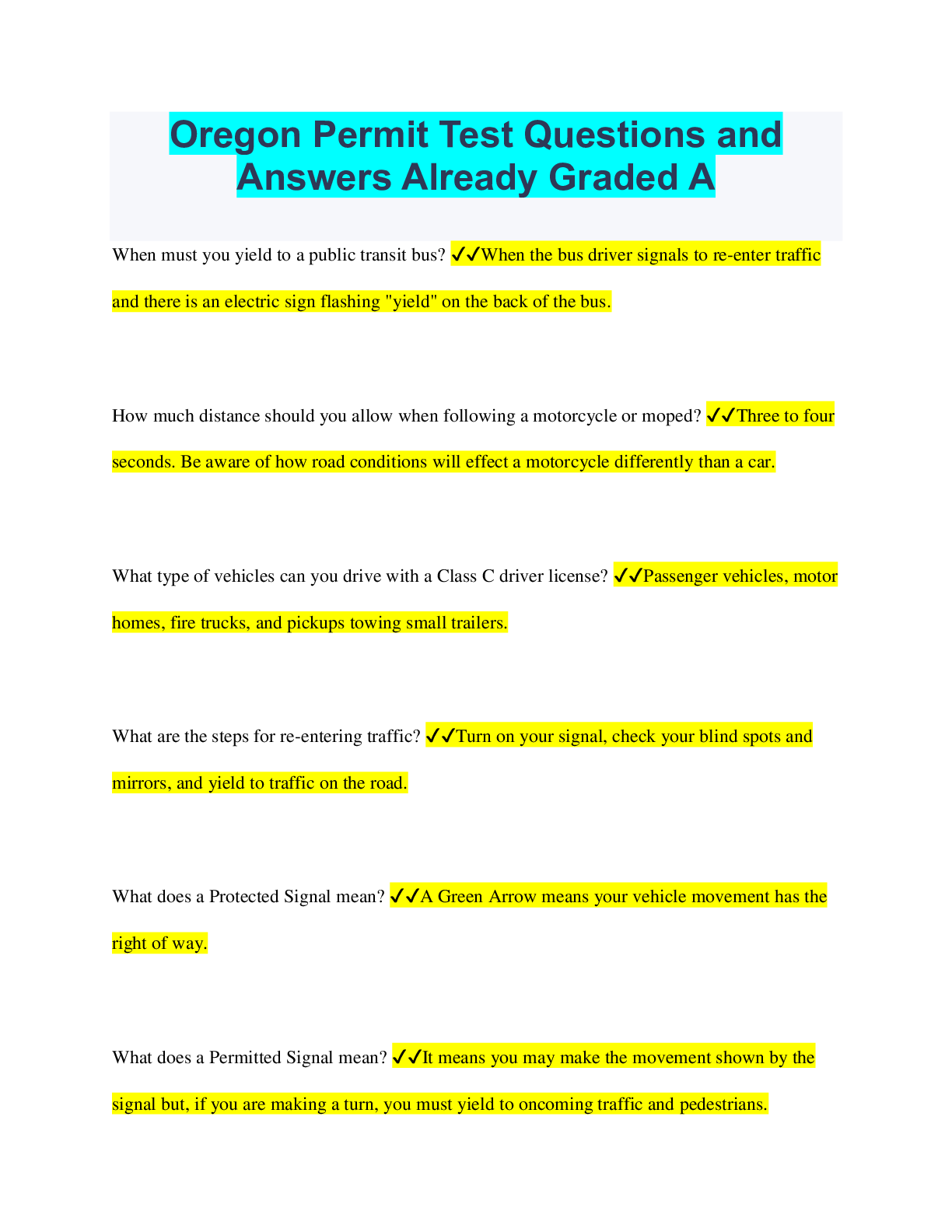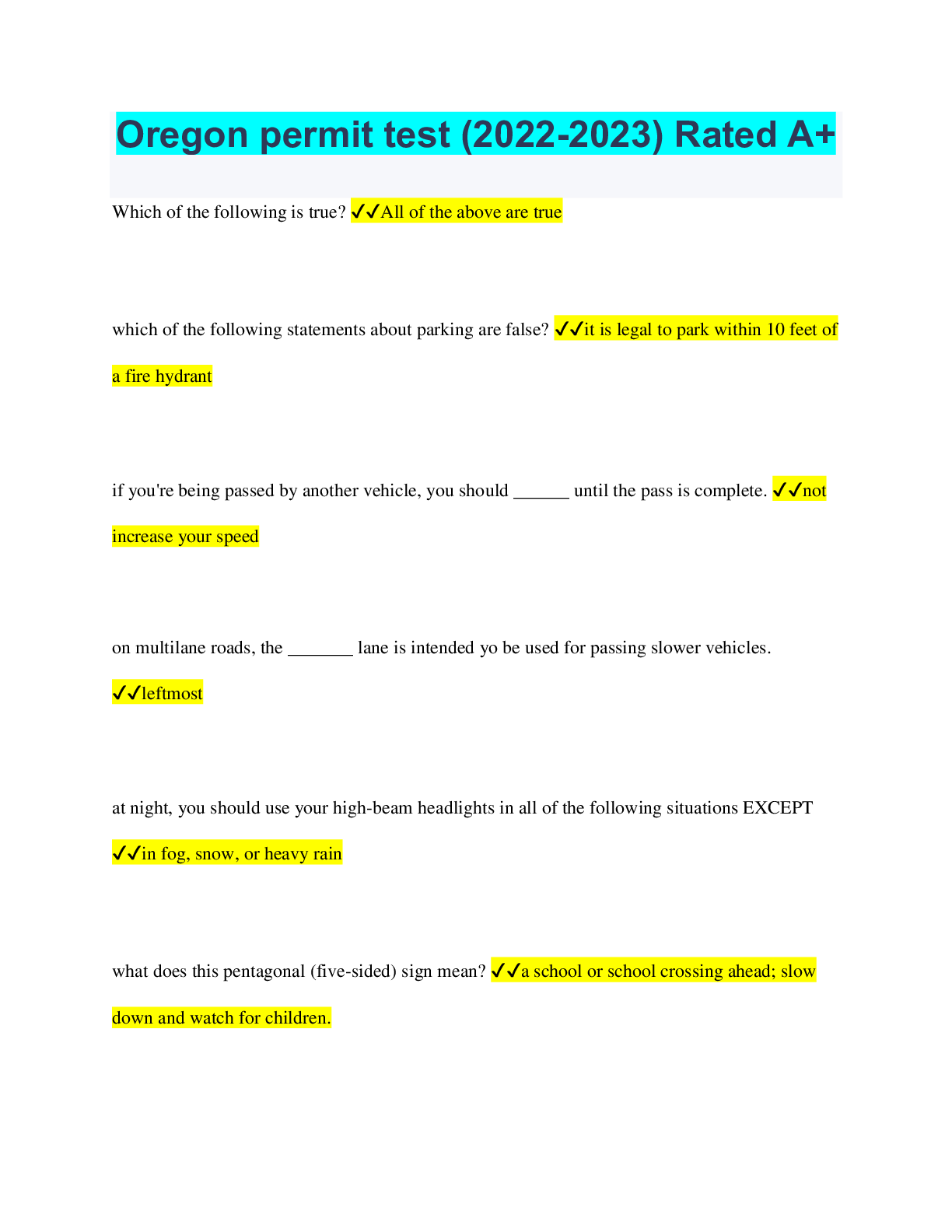Health Care > QUESTIONS & ANSWERS > LPN IV Therapy Test 2022 / IV Therapy Training Course; LPN IV Therapy Exam Summer 2022. (All)
LPN IV Therapy Test 2022 / IV Therapy Training Course; LPN IV Therapy Exam Summer 2022.
Document Content and Description Below
LPN IV Therapy Test 2022 / IV Therapy Training Course; LPN IV Therapy Exam Summer 2022. Therapy Made Incredibly Easy! 4th Edition (Ch 01 Quiz) 1. What percentage of body weight is attributed to ECF... ? A. 5% B. 10% C. 20% D. 40% - Ans-C. 20% • ECF makes up about 20% of body weight. (Ch 01 Quiz) 2. Which type of solution raises serum osmolarity and pulls fluid and electrolytes from the intracellular and interstitial compartments into the intravascular compartment? A. Isotonic B. Solvent C. Hypotonic D. Hypertonic - Ans-D. Hypertonic • The higher osmolarity of hypertonic solutions draws fluid into the intravascular compartment. (Ch 01 Quiz) 3. Which electrolyte participates in neurotransmitter release at synapses? A. Calcium B. Magnesium C. Phosphorus D. Chloride - Ans-A. Calcium • Calcium participates in neurotransmitter release at synapses. (Ch 01 Quiz) 4. Intravascular infections can be prevented by which of the following precautions? A. Securing the venous access device with gauze B. Changing insertion sites according to facility policy C. Applying the tourniquet 6" to 8" (15 to 20 cm) above the insertion site D. Washing your hands after inserting the device - Ans-B. Changing insertion sites according to facility policy • Intravascular infection can be prevented by alternating insertion sites. (Ch 01 Quiz) 5. When capillary blood pressure exceeds colloid osmotic pressure: A. water and diffusible solutes leave the capillaries and circulate into the ISF. B. water and diffusible solutes return to the capillaries. C. there's no change. D. intake and output are affected. - Ans-A. water and diffusible solutes leave the capillaries and circulate into the ISF. • When capillary blood pressure exceeds colloid osmotic pressure, water and diffusible solutes leave the capillaries and circulate into the ISF. When capillary blood pressure falls below colloid osmotic pressure, water and diffusible solutes return to the capillaries. (Ch 04 Quiz) 1. I.V. medication may be indicated when: A. the patient needs a slower therapeutic effect. B. the medication can't be absorbed by the GI tract. C. the medication given orally is stable in gastric juices. D. the medication isn't irritating to muscle tissues. - Ans-B. the medication can't be absorbed by the GI tract. • I.V. medication has a rapid effect and may be indicated if the medication can't be absorbed by the GI tract, is unstable in gastric juices, or causes pain or tissue damage when given I.M. or subQ. (Ch 04 Quiz) 2. What's the preferred route of medication in emergencies? A. I.V. B. SubQ C. I.M. D. Oral - Ans-A. I.V. • The I.V. route allows therapeutic levels to be achieved rapidly. (Ch 04 Quiz) 3. Loading dose, lock-out interval, and maintenance doses are basic to: A. I.V. therapy. B. PCA therapy. C. continuous I.V. morphine drips. D. TPN. - Ans-B. PCA therapy. • These concepts are basic to PCA therapy. (Ch 04 Quiz) 4. A patient receiving I.V. therapy has redness at the I.V. site. The patient denies feeling pain at the area. These findings suggest what degree of phlebitis? A. 4+ B. 3+ C. 2+ D. 1+ - Ans-D. 1+ • According to the Intravenous Nurses Society Revised Standards of Practice, phlebitis that involves erythema with or without pain is classified as 1+. (Ch 04 Quiz) 5. Elderly patients are more prone to which complications of I.V. therapy? A. Hypersensitivity B. Phlebitis C. Infection D. Extravasation - Ans-B. Phlebitis • Because many elderly patients have fragile veins, they're more prone to phlebitis and infiltration. (Ch 04 Quiz) 6. The one way to prevent extravasation is by: A. using a high-pressure pump to infuse vesicants. B. using a small vein to insert the access device. C. using a gauze dressing over the insertion site. D. using an existing I.V. catheter only after patency has been assured. - Ans-D. using an existing I.V. catheter only after patency has been assured. • An existing I.V. catheter should only be used after its patency has been assessed. If the catheter isn't patent, perform a new venipuncture to ensure correct catheter placement and vein patency. (Ch 01 Review) Objectives of I.V. therapy: - Ans-• To restore and maintain fluid and electrolyte balance • To provide medications and chemotherapeutic agents • To transfuse blood and blood products • To deliver parenteral nutrients and nutritional supplements (Ch 01 Review) Benefits of I.V. therapy: - Ans-• Administers fluids, drugs, nutrients, and other solutions when a patient can't take oral substances • Allows for more accurate dosing • Allows medication to reach the bloodstream immediately (Ch 01 Review) Risks of I.V. therapy: - Ans-• Blood vessel damage • Infiltration • Infection • Overdose • Incompatibility of drugs and solutions when mixed [Show More]
Last updated: 2 years ago
Preview 1 out of 39 pages

Buy this document to get the full access instantly
Instant Download Access after purchase
Buy NowInstant download
We Accept:

Reviews( 0 )
$10.00
Can't find what you want? Try our AI powered Search
Document information
Connected school, study & course
About the document
Uploaded On
Jun 17, 2022
Number of pages
39
Written in
Additional information
This document has been written for:
Uploaded
Jun 17, 2022
Downloads
0
Views
107

.png)


